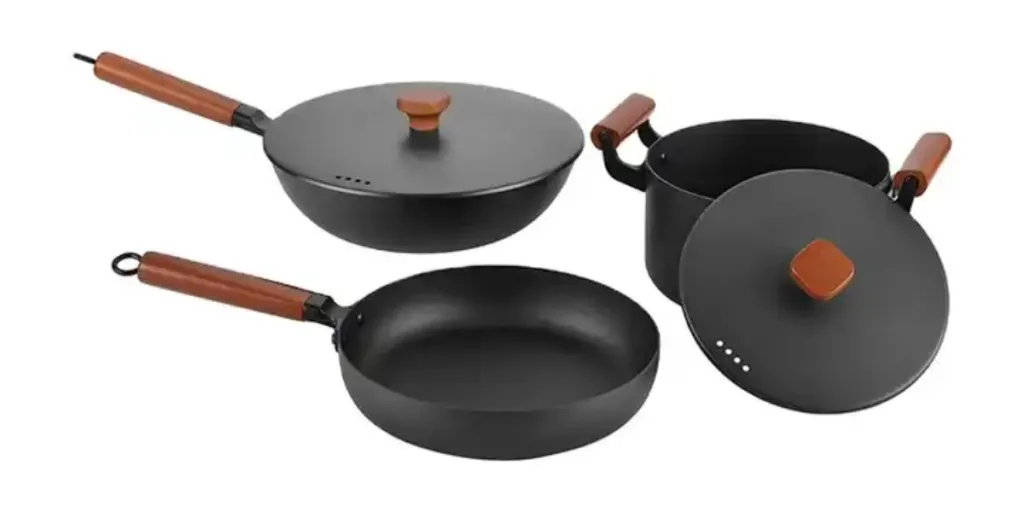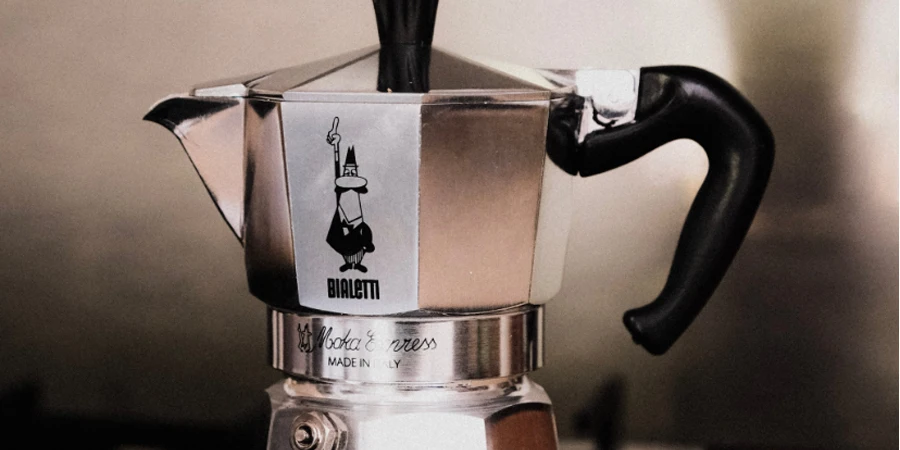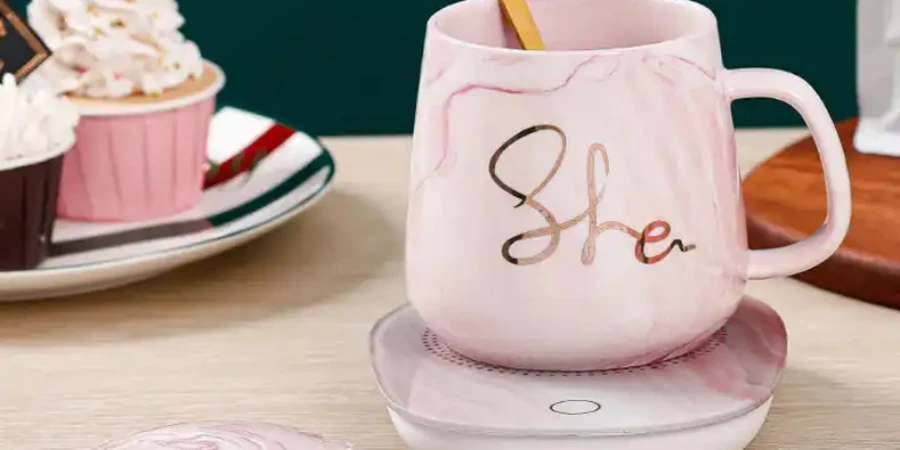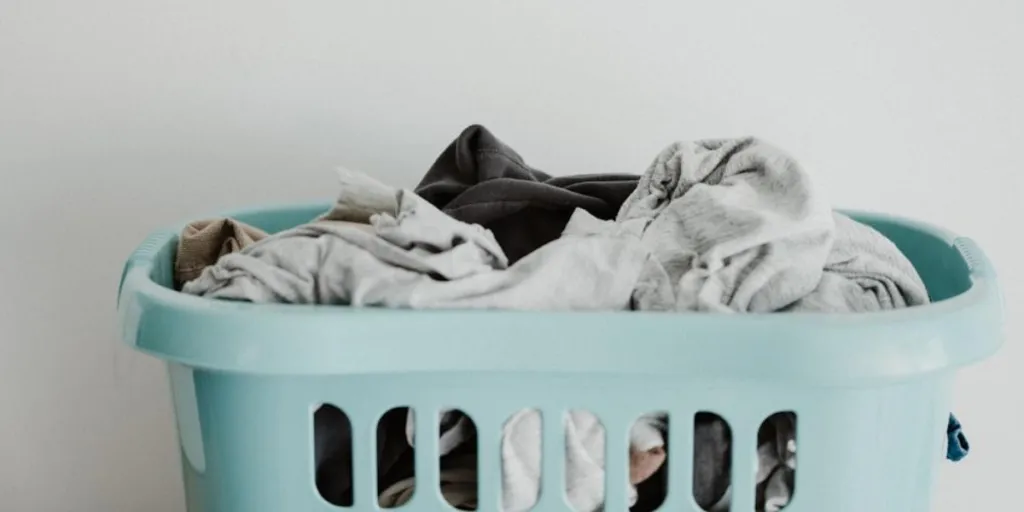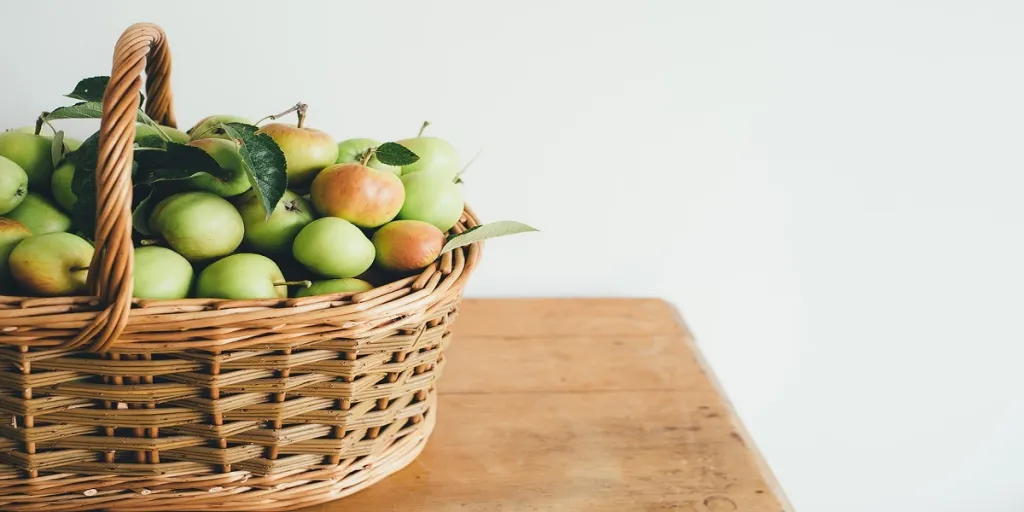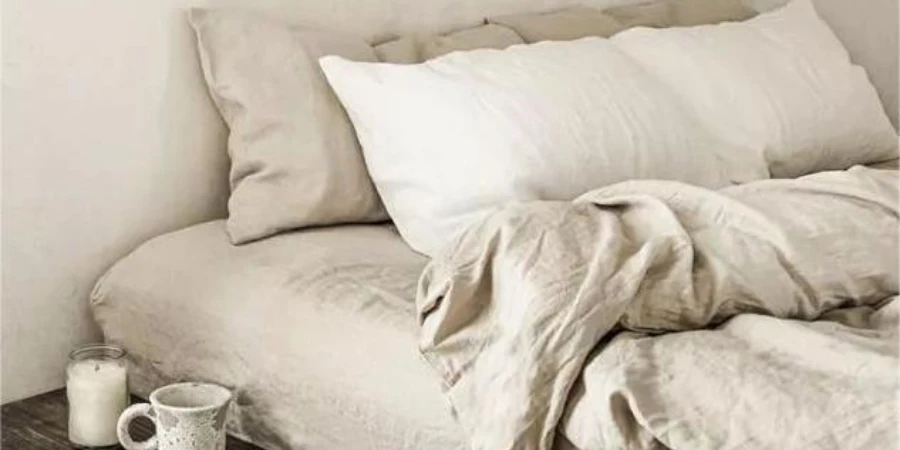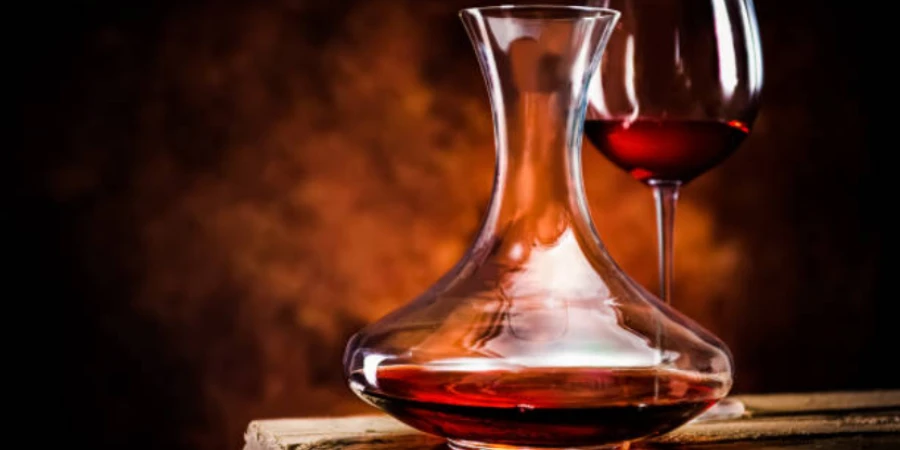Healthy sauté cookware is replacing skillets, fry pans, and sauté pans with toxic coatings. Market growth for these products is rising and keyword search volumes support this healthy trend.
Fortunately, better products are available, so the focus is on several of these alternatives, from stainless steel to cast iron pans. So, take the plunge and stock products that sell well. Choose cookware that supports a healthier lifestyle and the environment. Your customers will appreciate you for thinking of them.
Table of Contents
Non-stick frying pans are old news
Trending, healthy customer cookware choices
The bottom line
Non-stick frying pans are old news
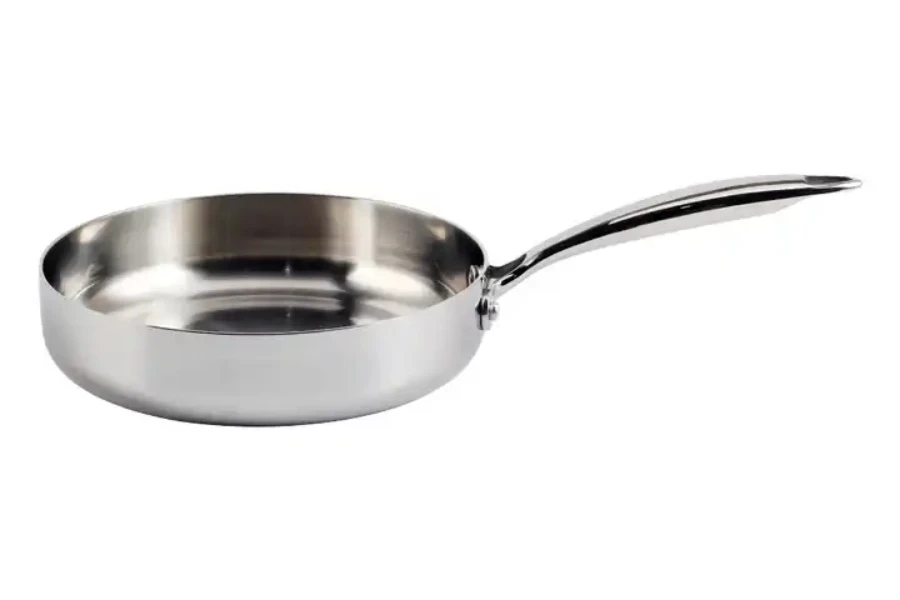
Here, the spotlight is on the size of the global cookware market and the trends that are moving away from harmful product coatings to healthy saute cookware materials.
Global cookware market size
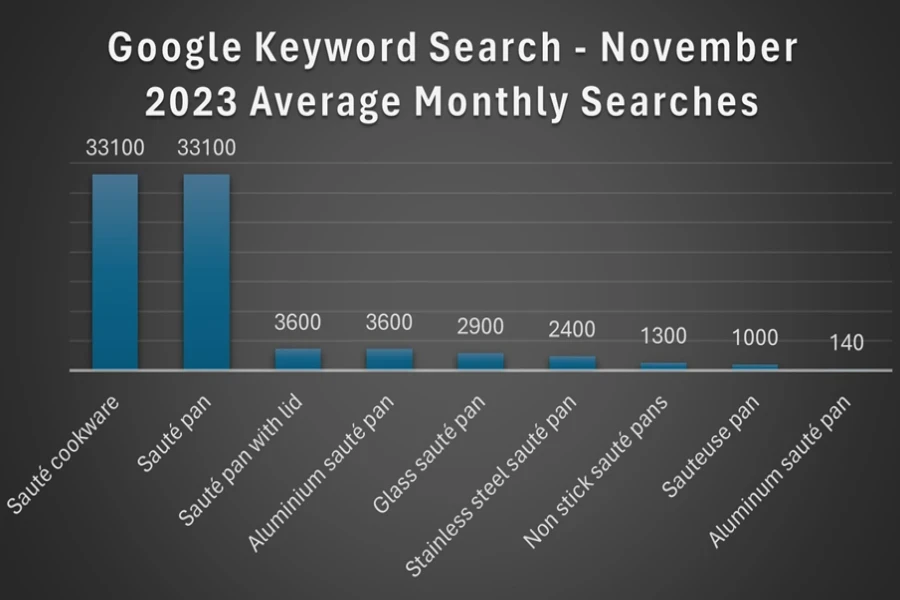
The market size of cookware in 2021 was USD 23.75 billion. Research shows that this figure may rise to USD 41.94 billion by 2030, at a compound annual growth rate (CAGR) of 6.5%. Of the cookware sales in this study, products made from stainless steel are the most popular.
Google Ads keyword searches for cookware saute pans averaged 33,100 in November 2023. In May 2023, the search volumes were 27,100, showing a healthy increase of 22%. The graph above shows the popularity of some descriptive keywords for cookware pans in relation to others.
Driving factors for ditching PFSA-polluting (like non-stick coating or PTFE) frying pan materials

Perfluoroalkylated and polyfluoroalkylated (PFAS) substances are known as forever chemicals. These chemicals can stay in the environment for decades if not centuries. Once in the environment, they affect human health, animal health, aquatic systems, and ecosystems.
However, customers are also researching chemicals such as polytetrafluoroethylene (PTFE), perfluorooctanoic acids PFOA, perfluorooctane sulfonic acids (PFOS), GENX, and those with similar acronyms.
These acronyms often indicate chemicals that fall under PFAS, except for GenX – a new coating that is also coming under review. The Environmental Protection Agency (EPA) of the U.S. has also declared certain PFAS as hazardous materials.
For these and similar reasons, customers are looking for better sauté cookware alternatives to toxic non-stick cookware. Several of these product materials are covered below with product examples to guide suppliers in new customer-centric choices.
Trending, healthy customer cookware choices
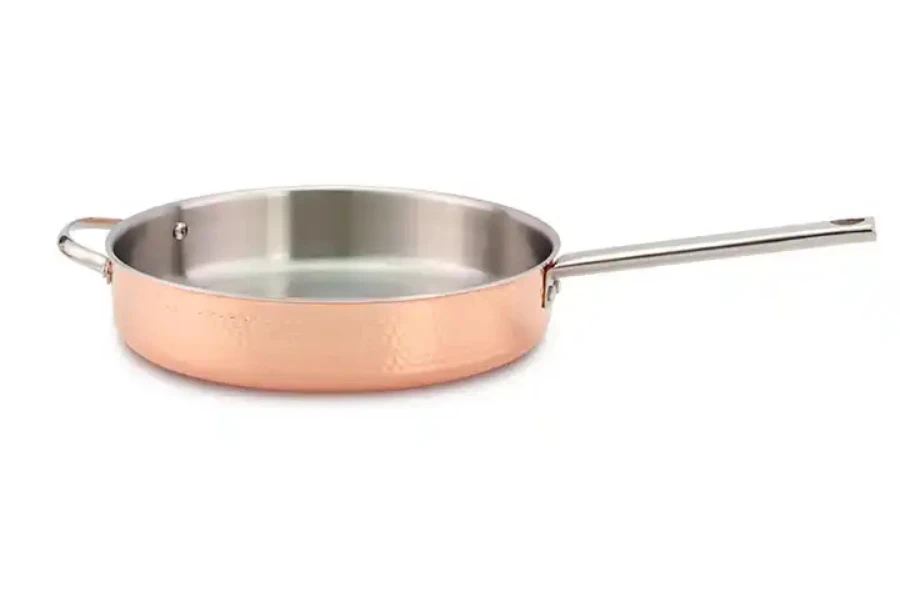
Understanding how times have changed and meeting customer demand is vital when buying cookware. Customers have become aware of dangerous non-stick cookware items and are searching for replacements. The discussion is on these factors and offering a selection of better products that fit in with a healthier lifestyle and environment.
Not all cookware coatings are bad
Certain PFSAs, but not all, are toxic. Some only release toxic fumes when hot. Others release toxic chemicals in the manufacturing process.
Customers are advised to research more about hazardous PFSAs, so they can make an informed decision. But keep in mind, healthier sauté cookware pans are also available.
These are a few of the best sauté pan materials:
- Stainless steel
- Cast iron and enamel-coated cast iron
- Copper aluminum alloys with cadmium and lead-free ceramic coatings
- Carbon steel
- Glass
Healthy cookware and frying pan materials alternatives to non-stick coating or PTFE
The following examples of cookware products are healthy alternatives to Teflon-coated (Polytetrafluoroethylene – PTFE) frying pans and other toxic cookware.
Stainless steel frying pans
Here are two different styles of stainless-steel frying pans to stock for various customer preferences. Inquire whether this cookware has an 18/8 or 18/10 stamp on the bottom. If not, it may leach chromium and nickel into food, especially when working with highly acidic foods.
Stainless steel induction-ready tri-ply clad deep sauté pan
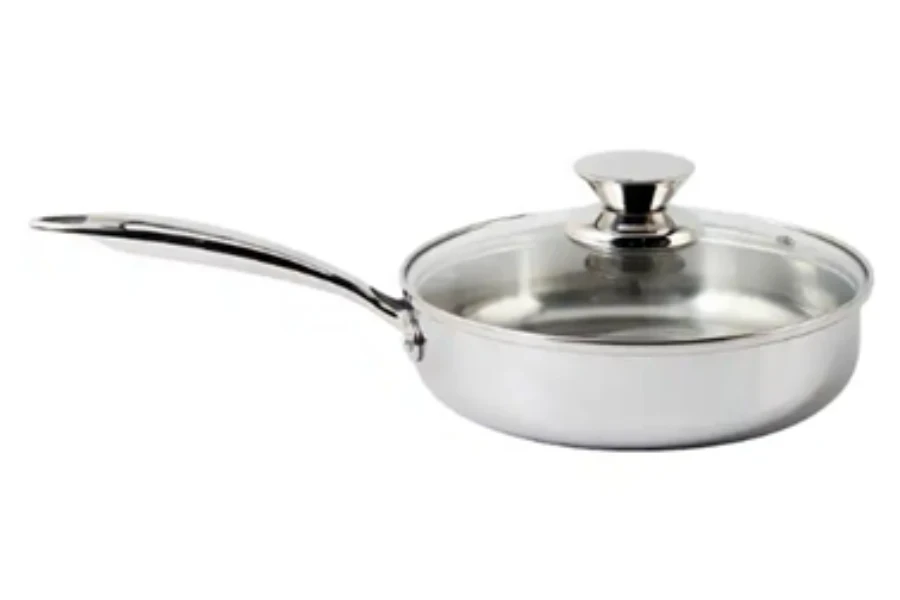
The manufacturer describes this sauté pan as made from stainless steel+Al+Cu with a lid. It comes with a honeycomb fire textured pattern and is suitable for use on gas and induction cookers.
Kitchen cookware dual handle sauté frying pan
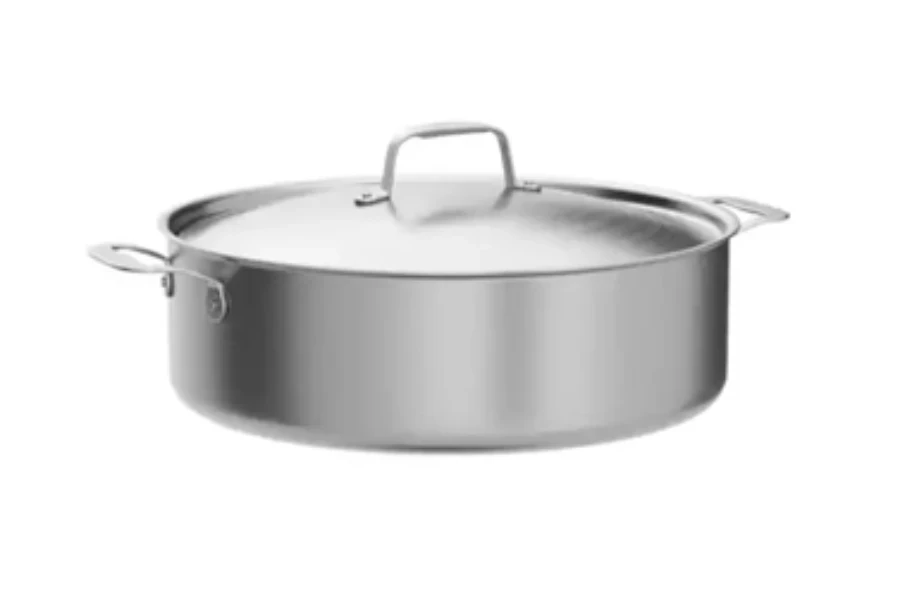
This is a stainless-steel pot with a polished finish. The design has high straight sides, dual handles, and a lid. The manufacturer advises that it is suitable for general use on induction and gas cookers.
Tip for writing: Stainless steel frying pans are trending on social media. Many people are taking to this media to display the non-stick properties of stainless-steel cookware at high temperatures.
To check if your pan is ready for non-stick cooking, heat it and drop in a little water. If the water sizzles and quickly evaporates, pour some oil into the pan. Allow it to warm briefly and fry an egg for breakfast.
Note that this tip does not work with butter, which burns at higher temperatures.
Cast iron skillets
Pre-seasoned 12-inch cast iron skillet
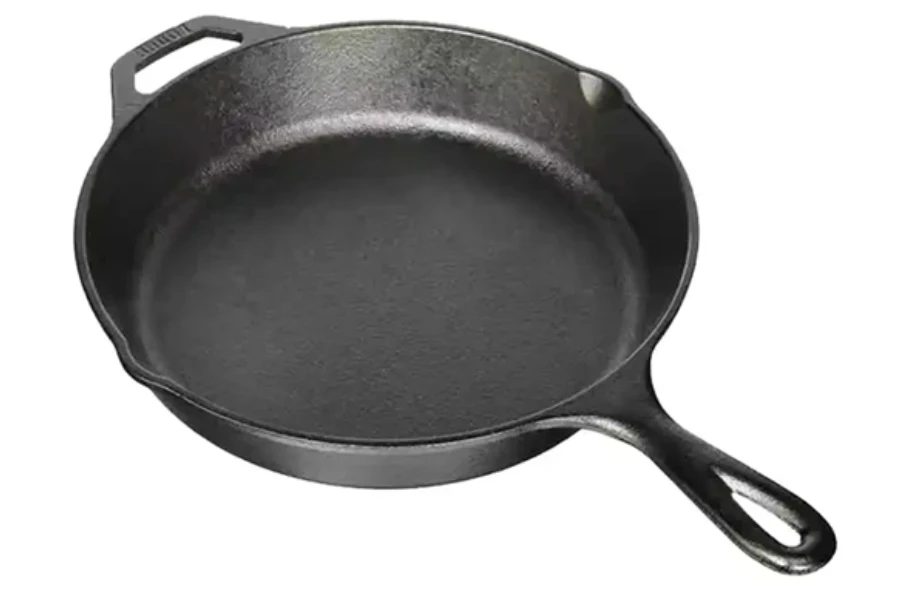
According to the supplier, they have pre-seasoned this fry pan with vegetable oil. Pre-seasoning prevents rusting while not in use. iron cookware can last for several generations if properly maintained. This material has a relatively even heat distribution, and is durable and safe, despite small amounts of iron leaching out over the years.
Copper frying pan
Non-stick fry pan with copper, aluminum alloy, and ceramic coating

Lead-free ceramic coatings are healthy, and copper is an excellent heat conductor. The supplier of this frying pan states that it is made from a copper-aluminum alloy with a non-stick ceramic coating. Always check the product quality and enquire whether the ceramic coating is cadmium and lead-free.
This pan is also available in multiple colors ranging from lilac to red, orange, blue, green, and others.
Carbon steel
Set of nonstick carbon steel cooking pots and pans
Steel and carbon are both safe cookware materials. This 6-piece pan set is available in pale blue. The set consists of two fry pans and three pots in various sizes. Customers can use this cookware in the home or commercial environments.
Non-stick eco-friendly carbon steel fry pan
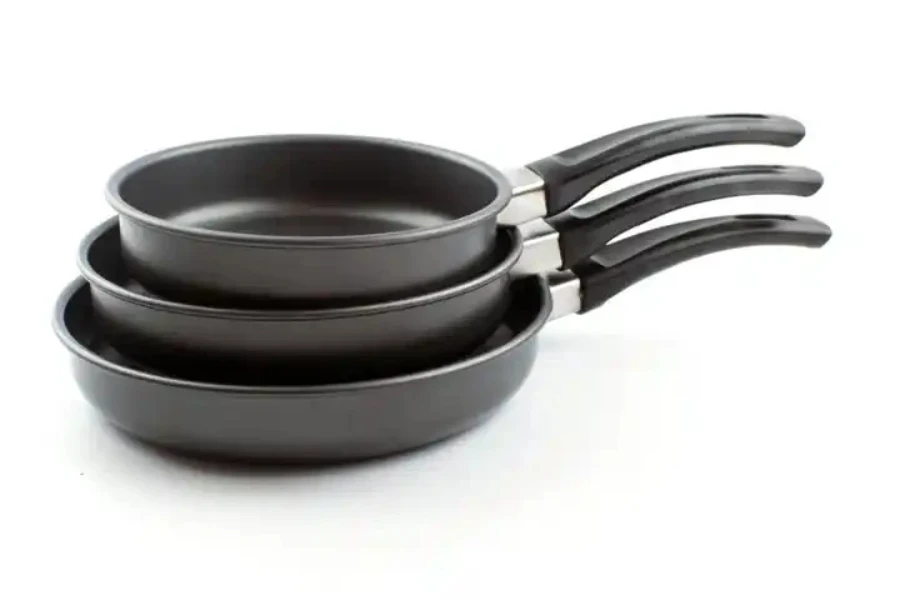
The seller describes these sauté pans as eco-friendly, made from carbon steel, and available with a non-stick coating. Since the non-stick coating is optional, it is always safer to check what you are buying before placing an order. Many non-stick coatings contain harmful toxins, whereas a good quality ceramic coating is also non-stick but safe to cook with.
Customers can order this pan in three sizes, 5.5/6.3/7.08 inches (14/16/18 cm). It is safe to use these sauté pans on hot plates, gas and electric stoves, or induction and ceramic cookers.
Cast carbon steel

Cast carbon steel is a mixture of carbon and steel. Carbon steel typically heats well and holds its heat well. Because it is thinner than cast iron cookware, it heats a little more evenly. Yet – its heat distribution is not as even as stainless steel cookware. Also, this material is highly durable and light. Like cast iron, this product must be seasoned for protection.
This 10-inch (26 cm) diameter fry pan is advertised as an aluminum alloy with non-stick properties and a wooden handle. As always, it is best to check with suppliers regarding product materials before committing to an order.
Glass sauté pans
High borosilicate glass pan with wood handle
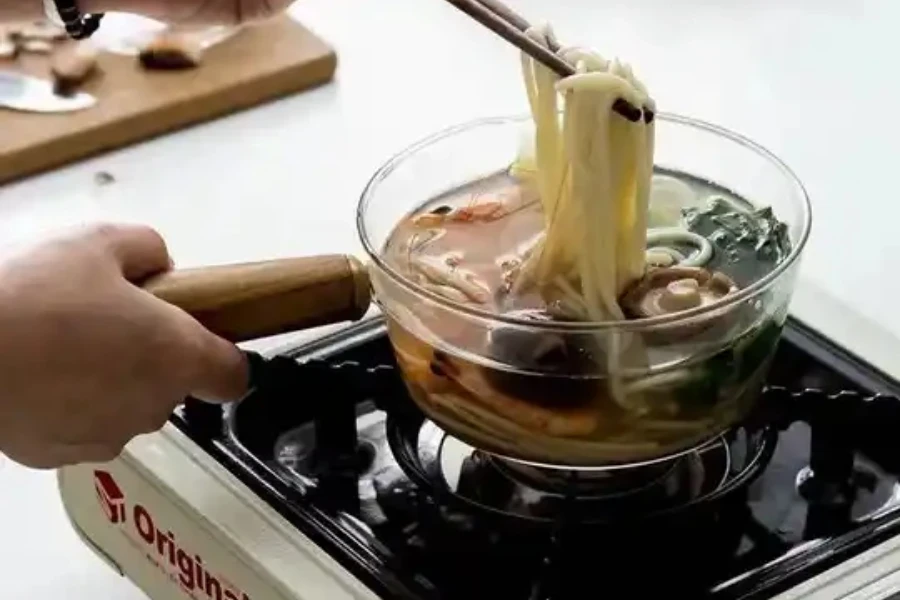
Some types of glass cookware are safe and strong enough for use on induction cookers and gas stoves. Some sources say it is safe to use high-quality borosilicate glass cookware directly from the freezer to the stove. Besides, this type of material is often dishwasher and microwave-safe. This particular pan has a 4.92-inch (12.5 cm) and 5.9-inch (15 cm) diameter. Buyers are welcome to make inquiries about orders.
The bottom line
Any professional chef will use sauté cookware that doesn’t harm people or the environment. Still, there are restaurants and commercial kitchens that have not upgraded their cookware. Likewise, many homeowners have yet to replace their harmful cookware.
Besides chefs and homeowners, the hospitality industry, hospitals, and similar organizations use cookware. With such a broad market, buyers will have to decide for themselves which markets they want to serve.
Considering stable growth forecasts for sauté cookware, it is worthwhile to increase inventories. This choice is especially valuable for meeting the needs of health-conscious customers now and in the future.
